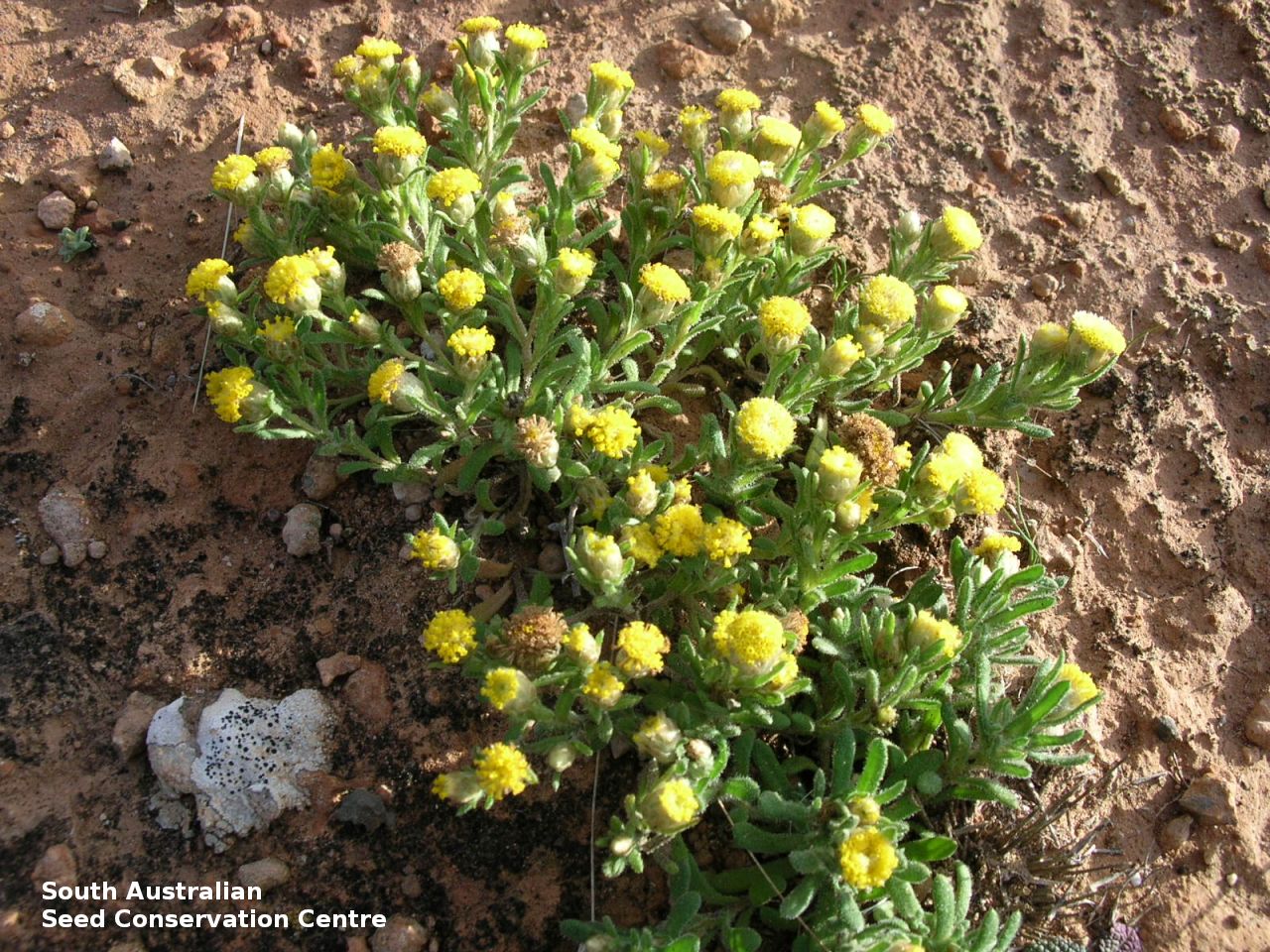
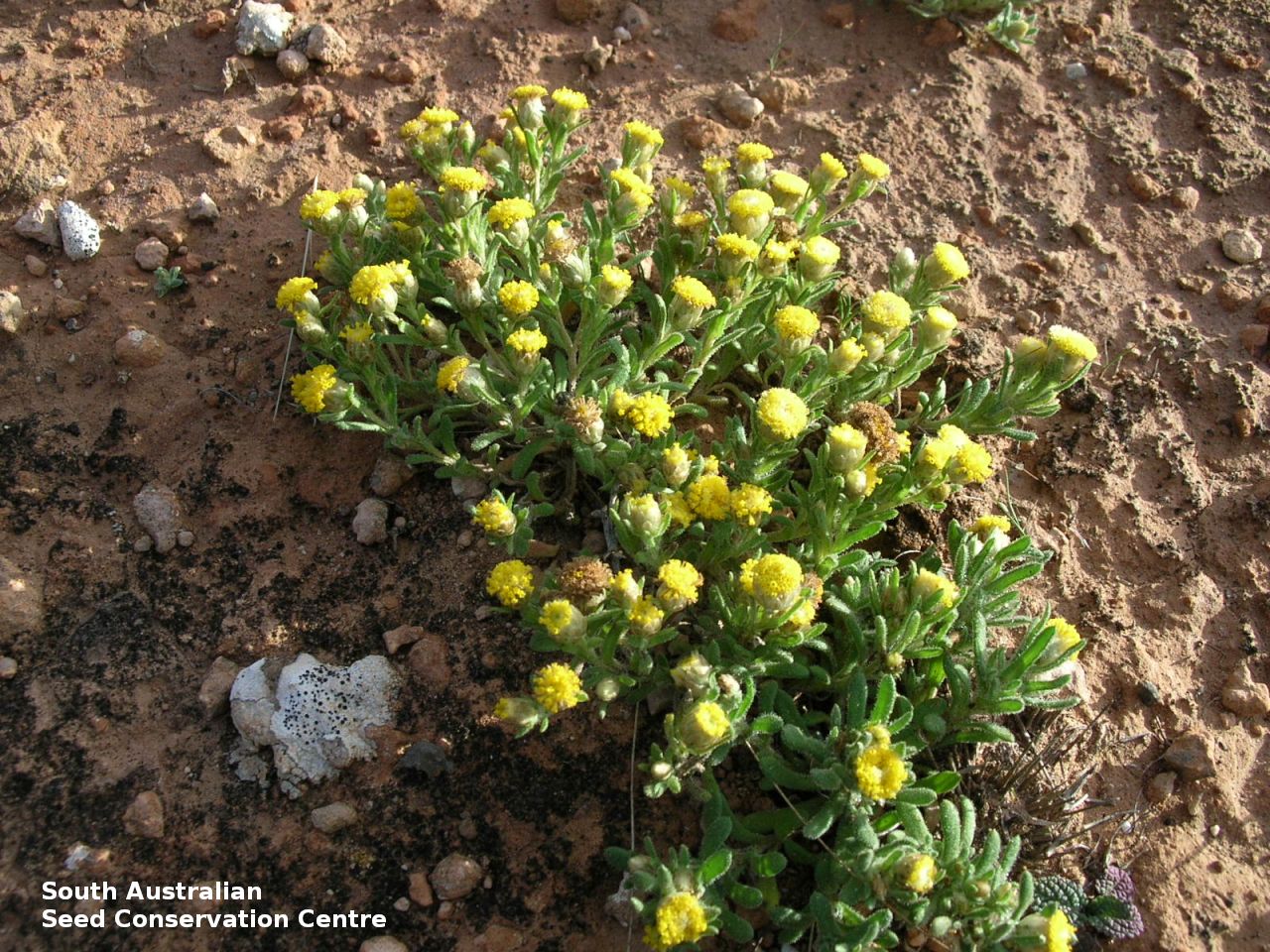
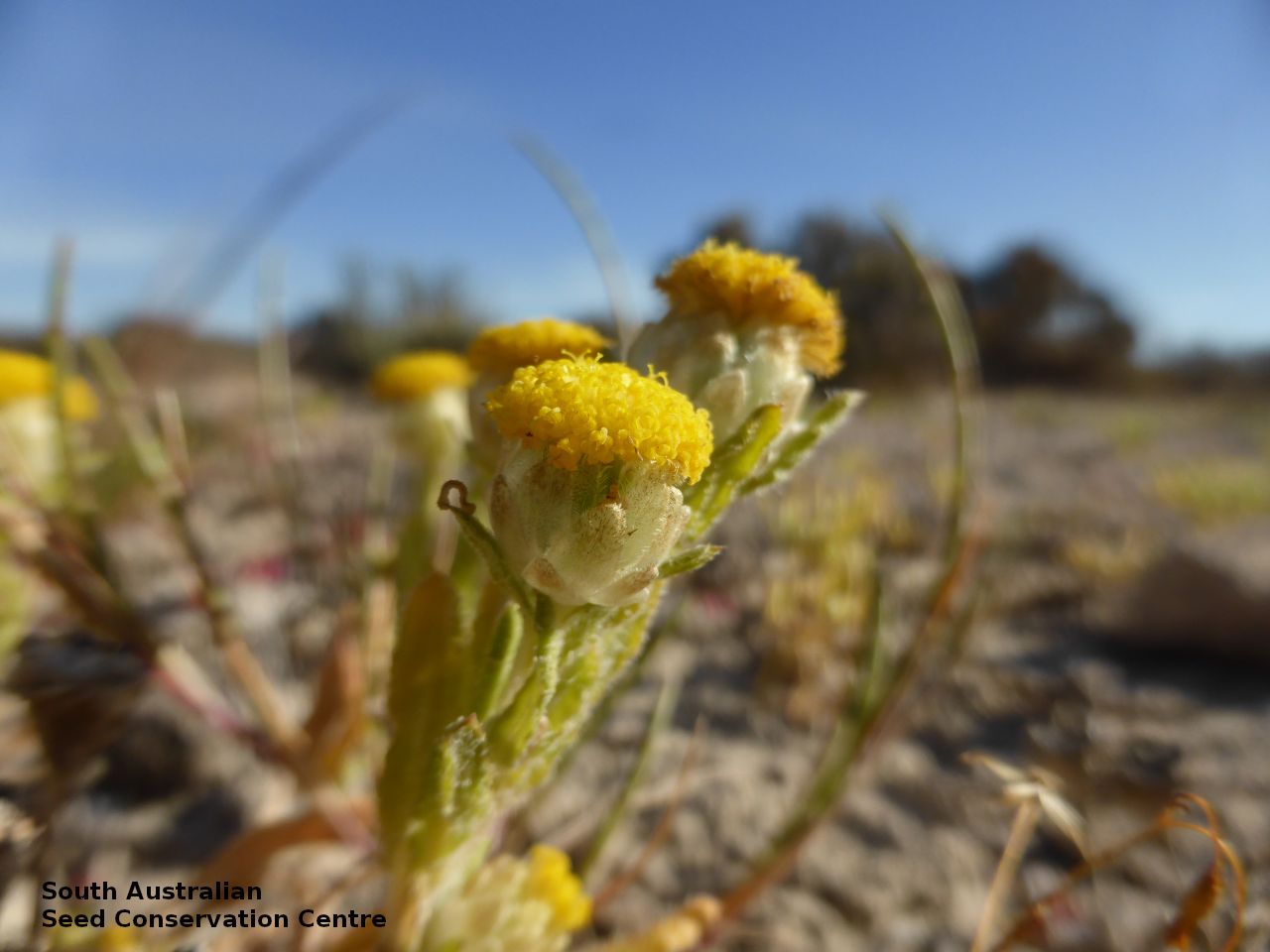
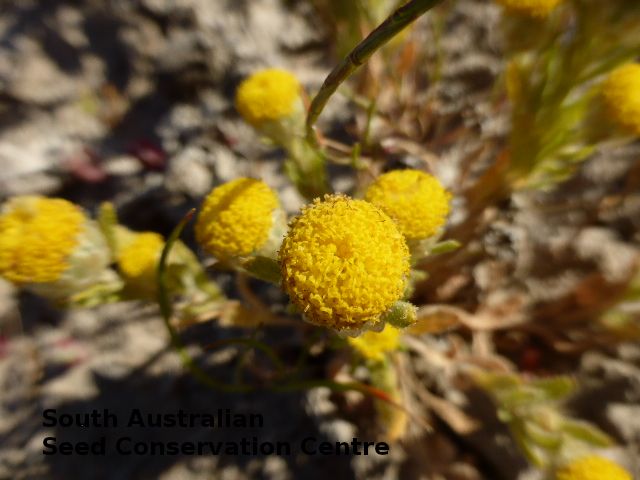
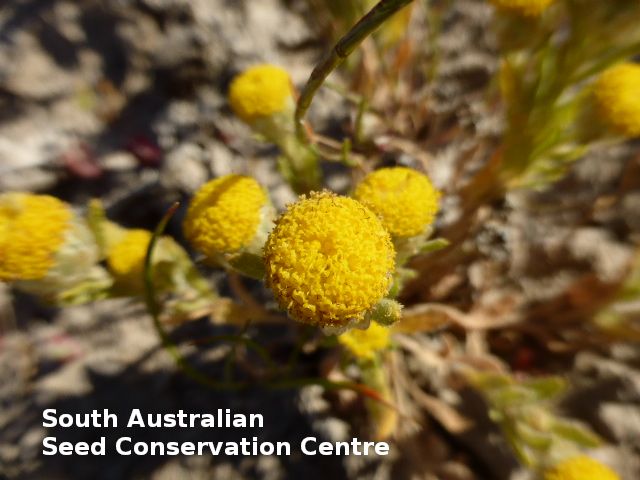
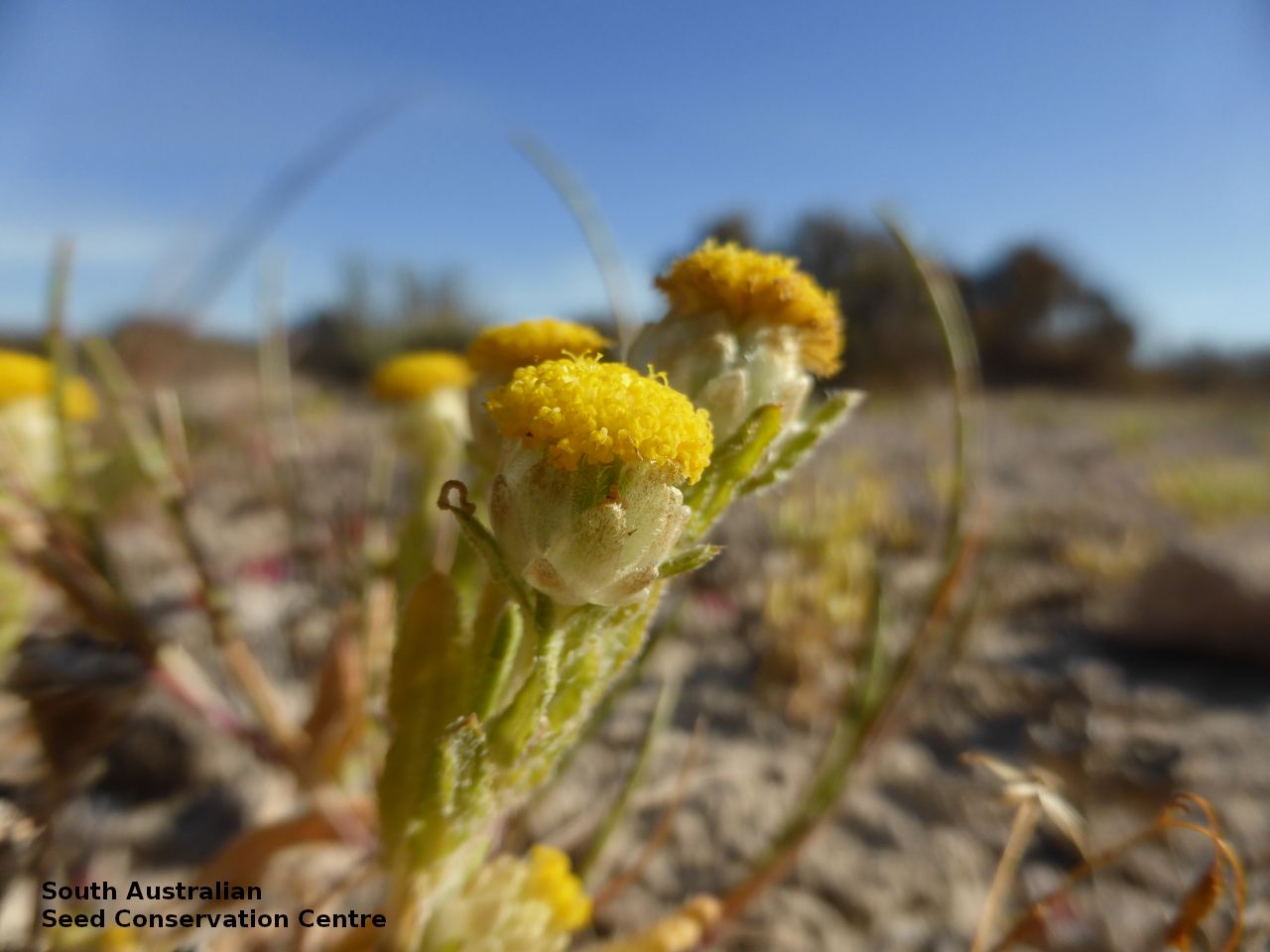
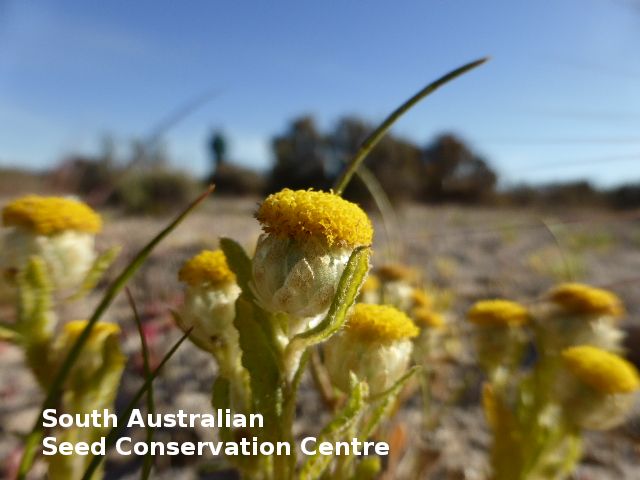
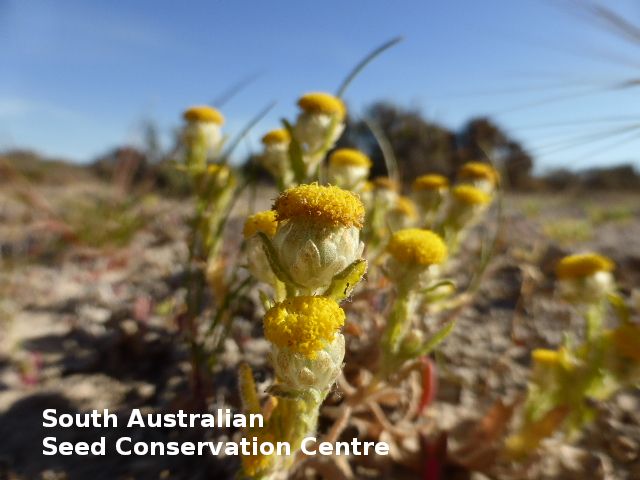
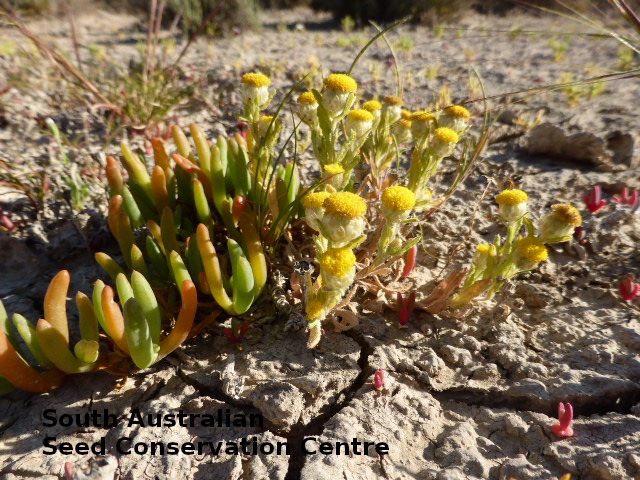
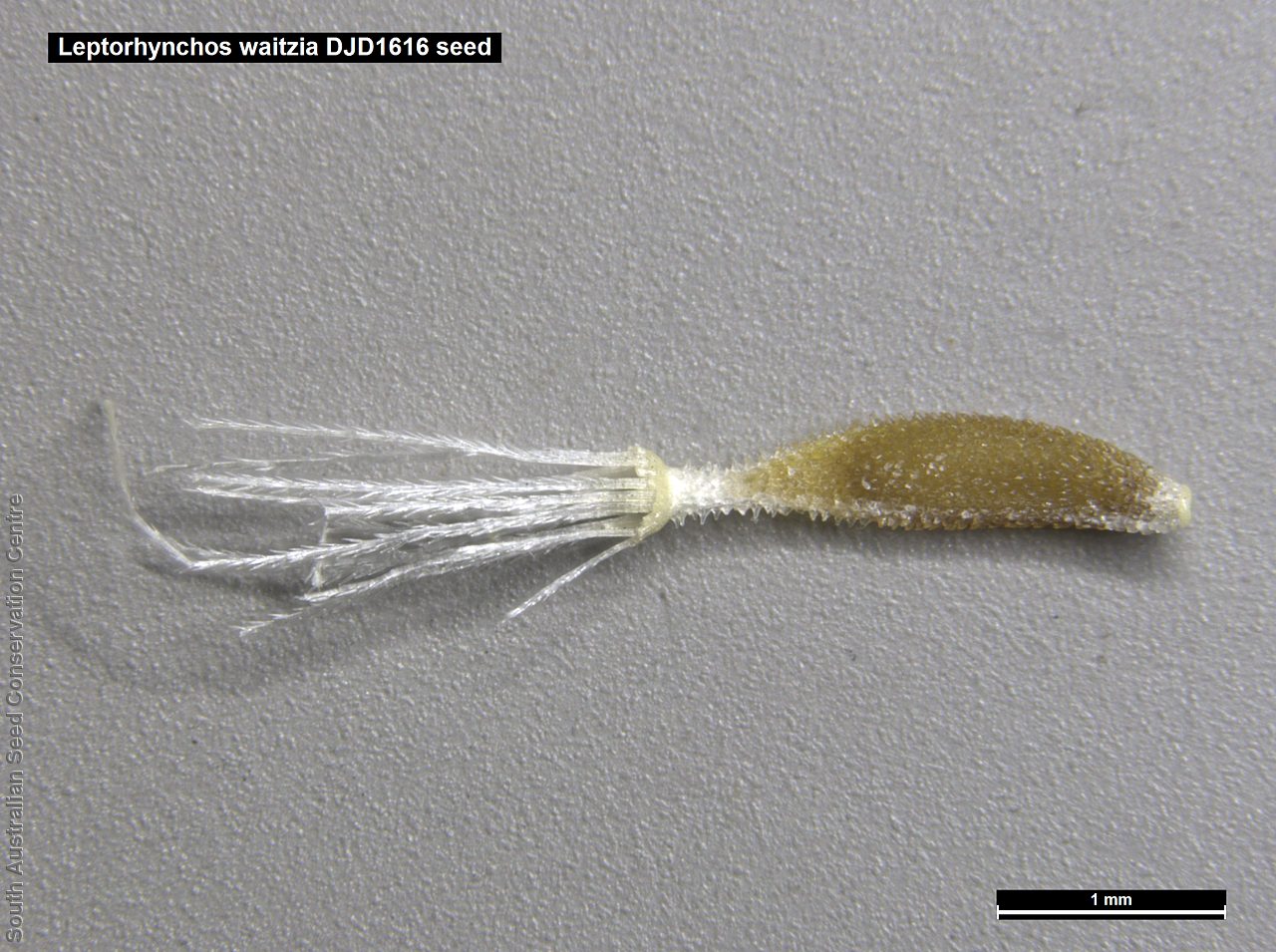
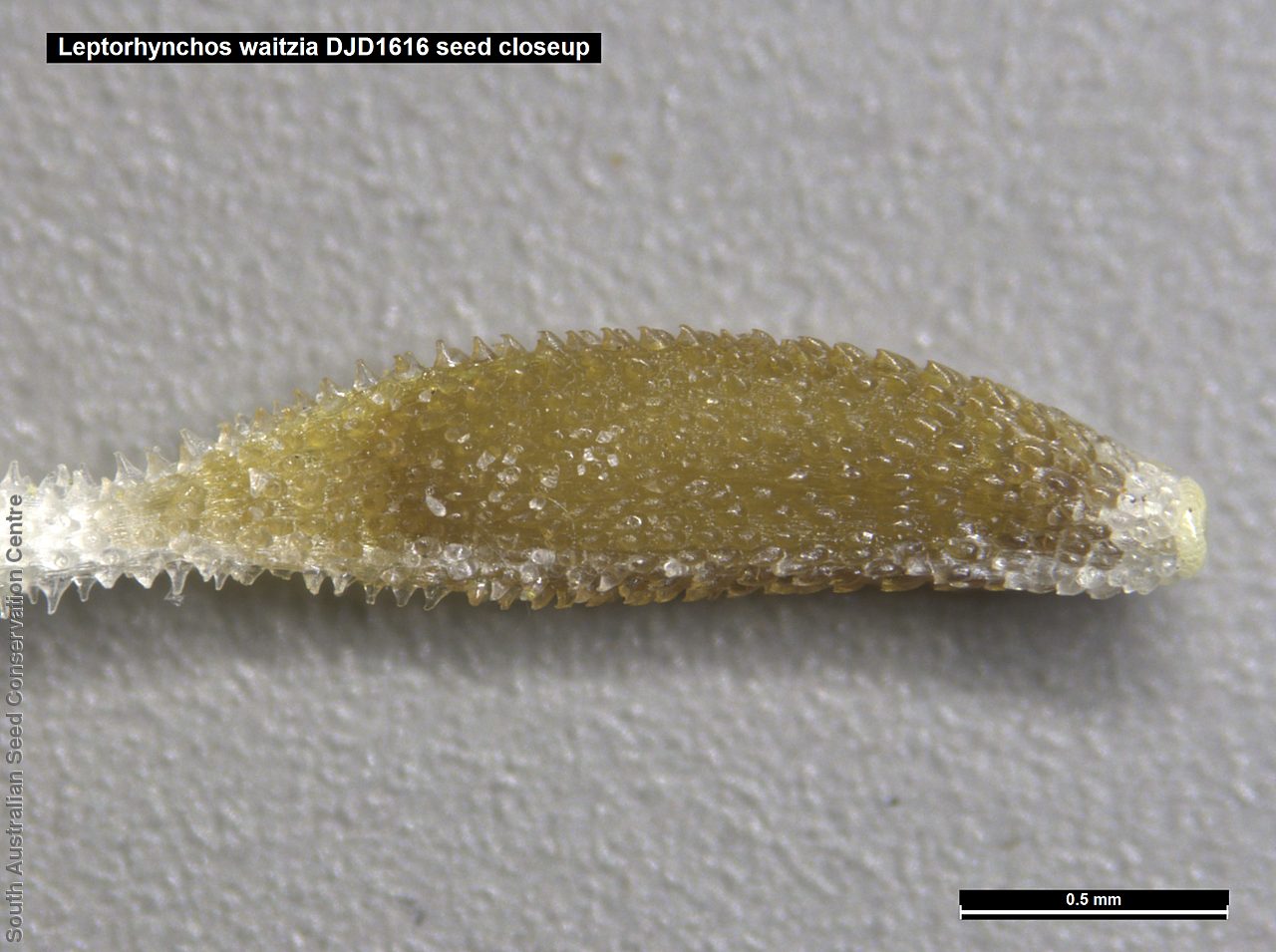
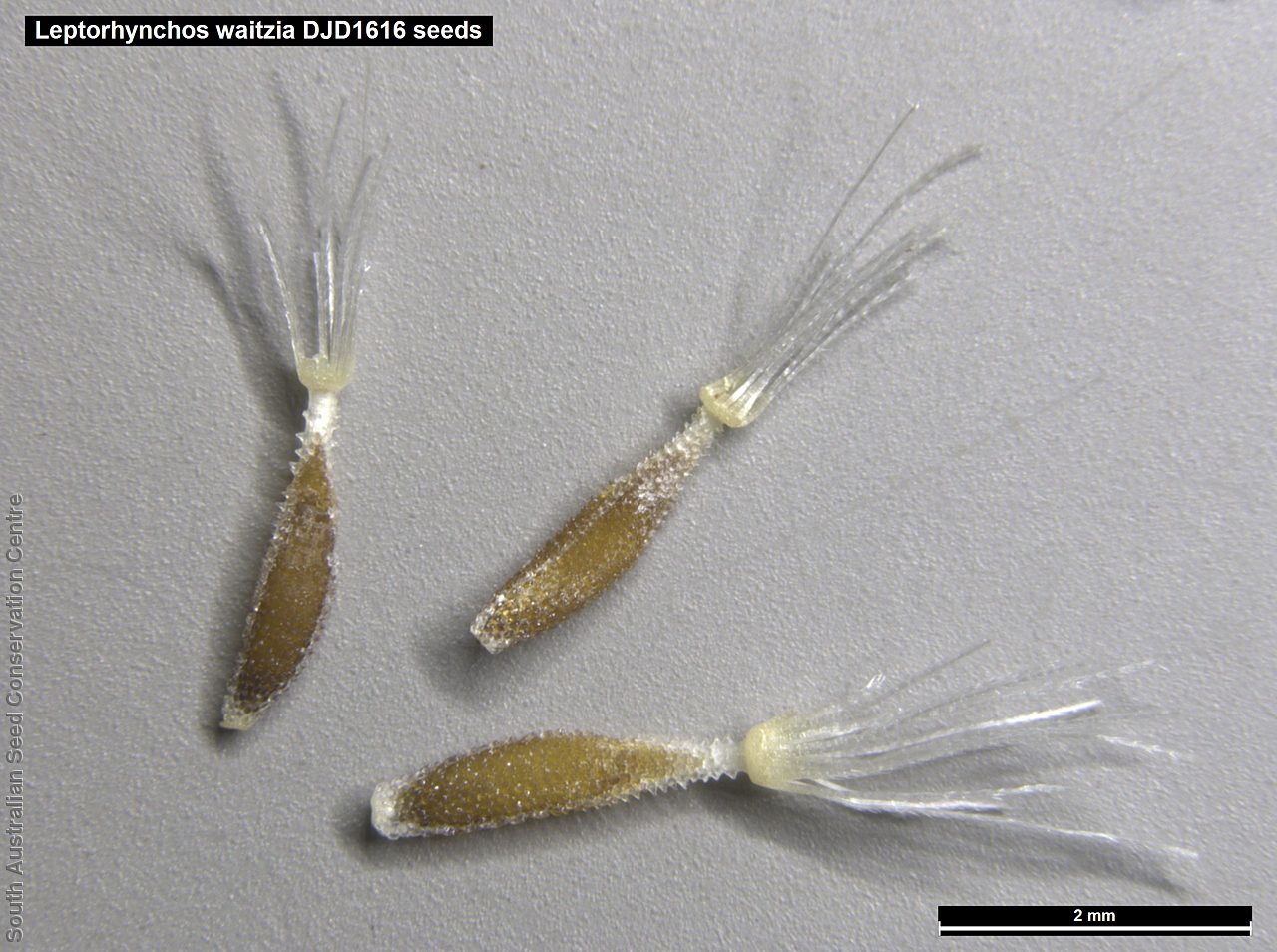
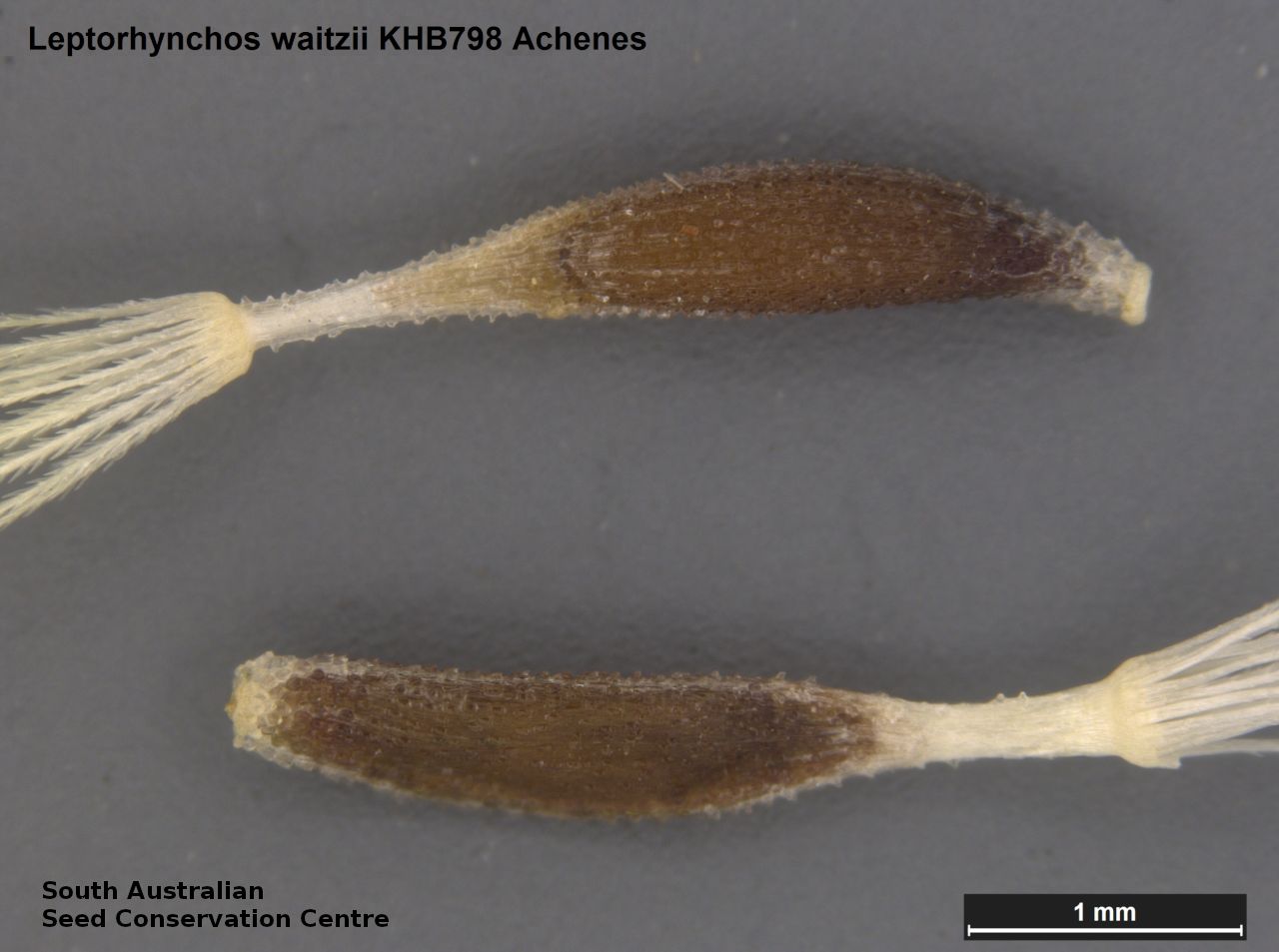
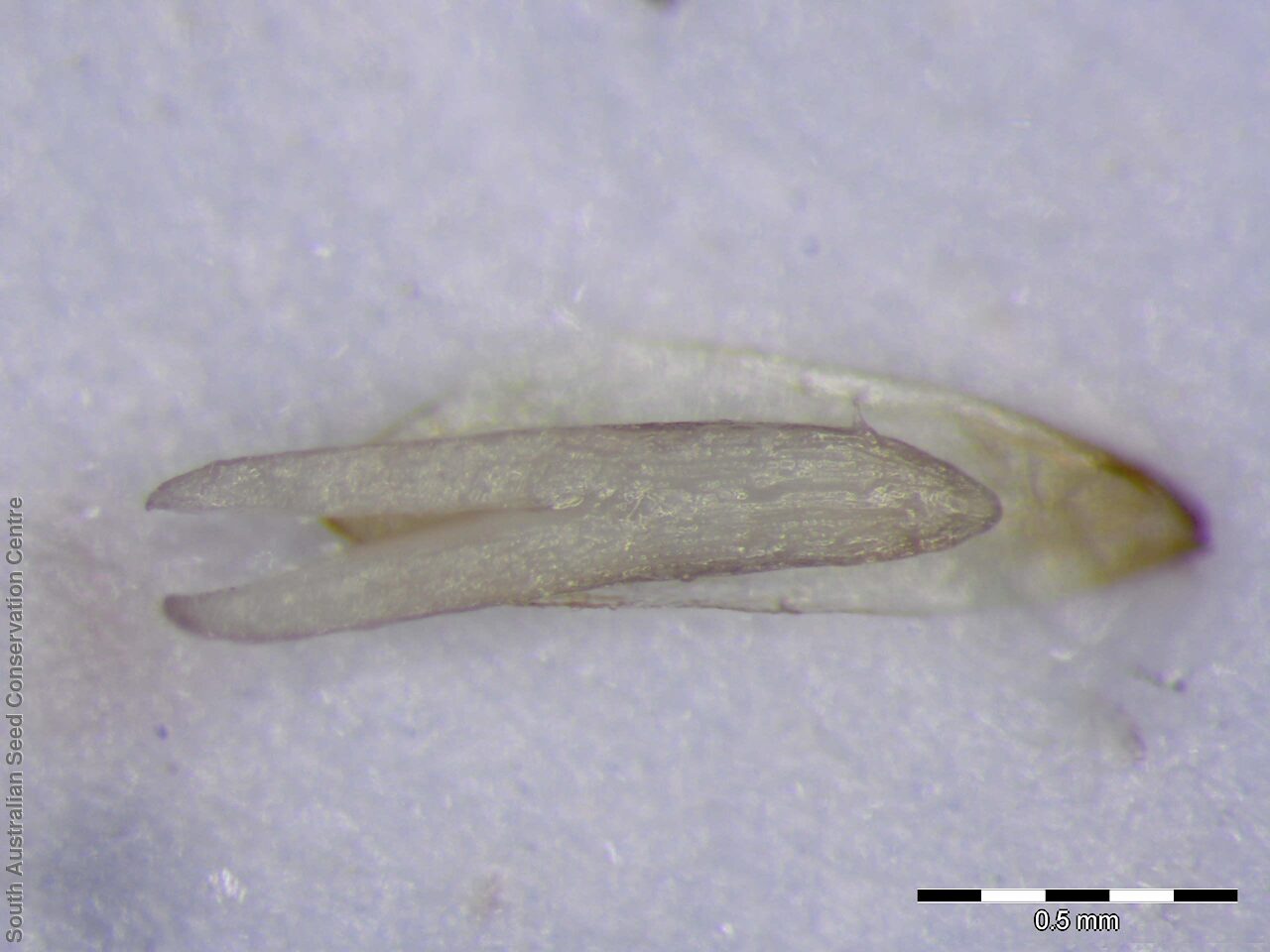
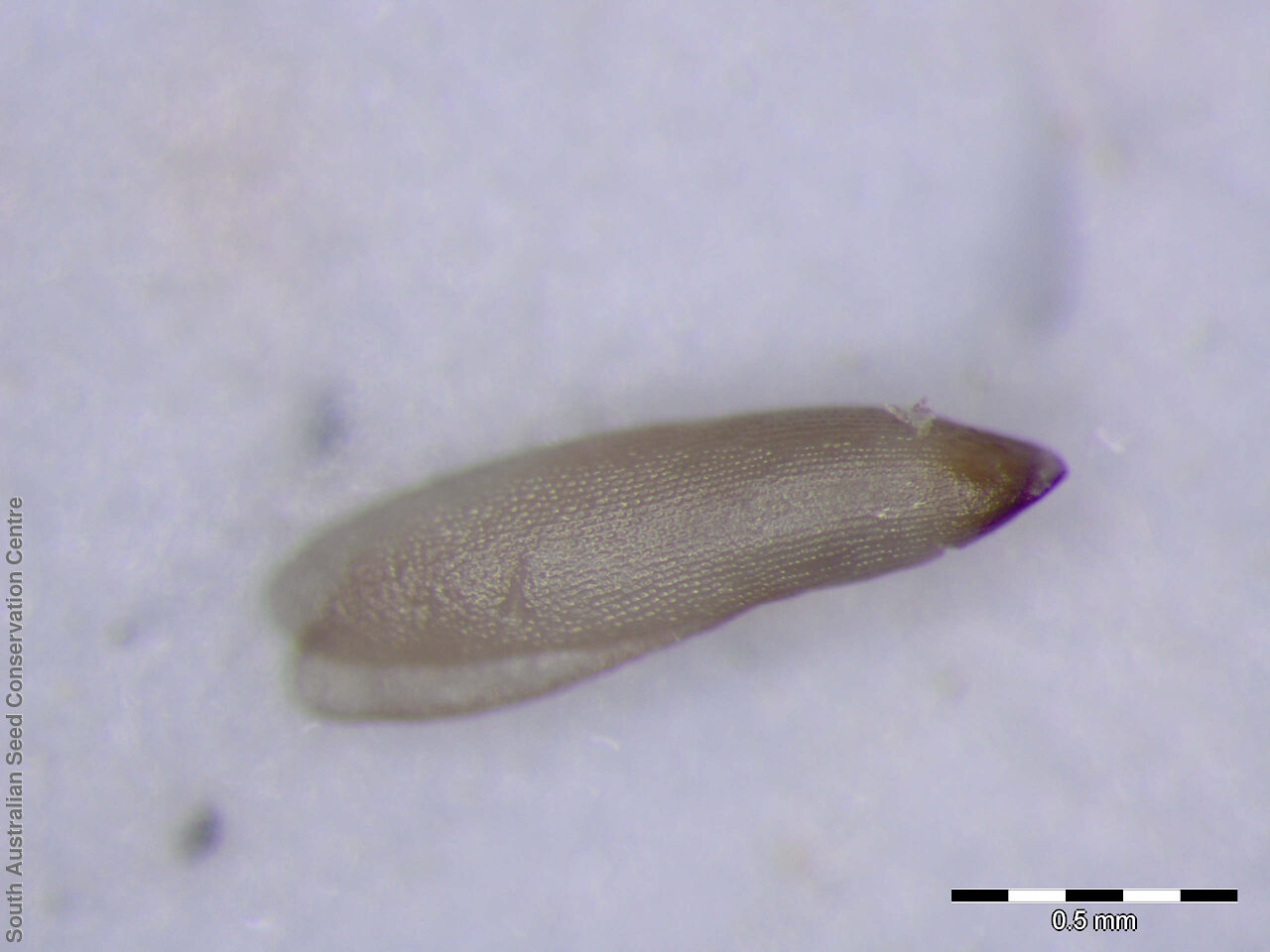
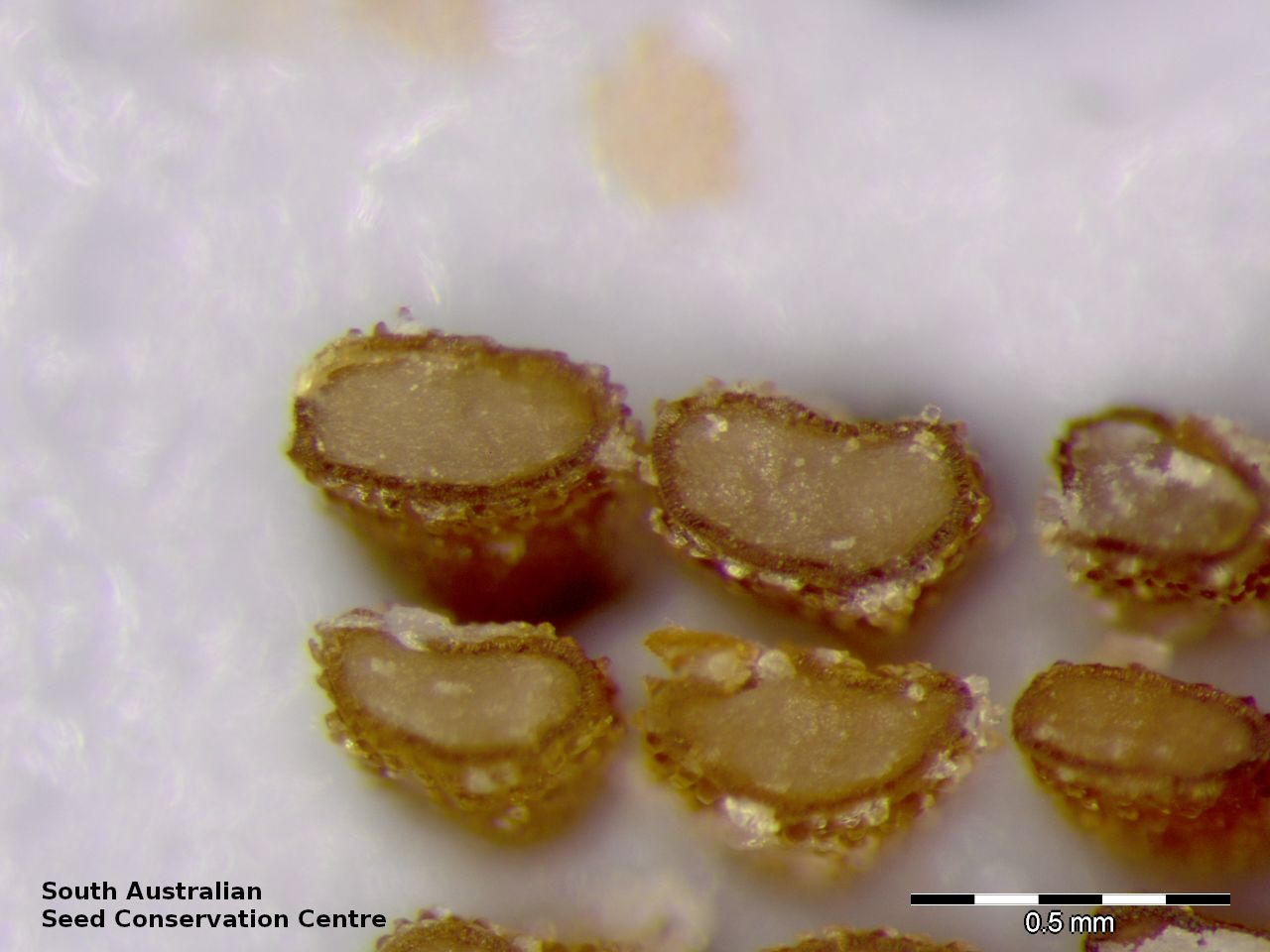

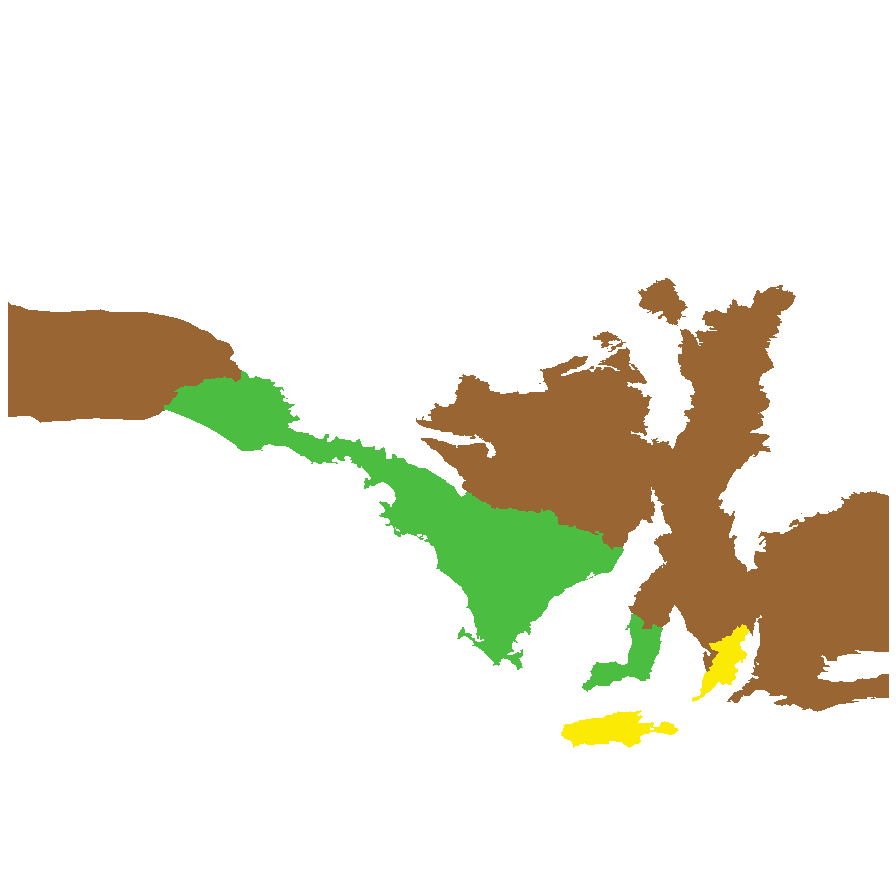
Botanical art
Prior names
Leptorrhynchus waitzia, orth.var.
Etymology
Leptorhynchos from the Greek 'leptos' meaning slender and 'rhynchos' meaning a snout; alluding to the beaked achenes of some species. Waitzia named after Karl Friedrich Waitz (1774�1848), a privy councillor of the Duchy of Saxe-Altenburg.
Distribution and status
Found across the southern part of South Australia except in the South-east, growing in open sites, often on seasonally inundated flats, with loamy soils or in coastal situations in calcareous sand or on salt flats. Also found in New South Wales and Victoria. Native. Common in South Australia. Very rare in New South Wales. Common in Victoria.
Herbarium regions: Nullarbor, Flinders Ranges, Eyre Peninsula, Northern Lofty, Murray, Yorke Peninsula, Kangaroo Island
NRM regions: Alinytjara Wilurara, Eyre Peninsula, Kangaroo Island, Northern and Yorke, South Australian Arid Lands, South Australian Murray-Darling Basin
AVH map: SA distribution map (external link)
Plant description
Annual herb to 20 cm high, branching mostly from base with ascending, white-cottony stems. Leaves narrow-oblanceolate, to 4.5 cm long and 4 mm wide, reducing slightly to just below capitulum, acute, upper surface scabrous with coarse hairs, sometimes cottony, lower surface hairy or cottony, margins recurved. Flower-heads broadly campanulate, to 1.5 cm diameter; outer involucral bracts ovate with rounded apices, almost transparent, or with straw-coloured flecks or streaks, minutely glandular, margins shortly ciliate; inner bracts linear, mostly herbaceous, glandular, with scarious, acute or subacute, ciliate tips; florets yellow. Flowering between september and October. Fruits are white fluffy daisy-head. Seeds are brown ovoid seed to 4 mm long and 1 mm wide, covered in barbs and with short feathered-like papus at one end. Seed embryo type is spatulate fully developed.
Seed collection and propagation
Collect seeds between October and November. Collect heads that are fluffy. Either pick off the whole heads or use your finger and pull off the seeds from the head. Mature seeds will come off easily. Place the heads in a tray for a week to dry. No cleaning is required if only pure seeds are collected. If heads are collected, then rub the heads gently with your hands to dislodge the seeds. Viable seeds will be fat and hard. Use a sieve to separate the unwanted material. Store the seeds with a desiccant such as dried silica beads or dry rice, in an air tight container in a cool and dry place. From two collections, the seed viability were average to high, ranging from 50% to 95%.
| Location | No. of seeds (weight grams) | Number of plants | Date collected | Collection number Collection location | Date stored | % Viability | Storage temperature |
|---|---|---|---|---|---|---|---|
| BGA MSB | 5,000 (0.94 g) 5,000 (0.94 g) | 100+ | 17-Oct-2006 | DJD600 Yorke Peninsula | 1-Aug-2007 | 50% | -18°C |
| BGA | 4,800 (0.77 g) | 100+ | 11-Nov-2009 | DJD1616 Yorke Peninsula | 1-Jun-2010 | 95% | -18°C |
| BGA | 27,000 (6.26 g) | 200+ | 16-Oct-2013 | KHB798 Flinders Ranges | 1-Jan-2016 | 100% | -18°C |
Number of plants: This is the number of plants from which the seeds were collected.
Collection location: The Herbarium of South Australia's region name.
% Viability: Percentage of filled healthy seeds determined by a cut test or x-ray.